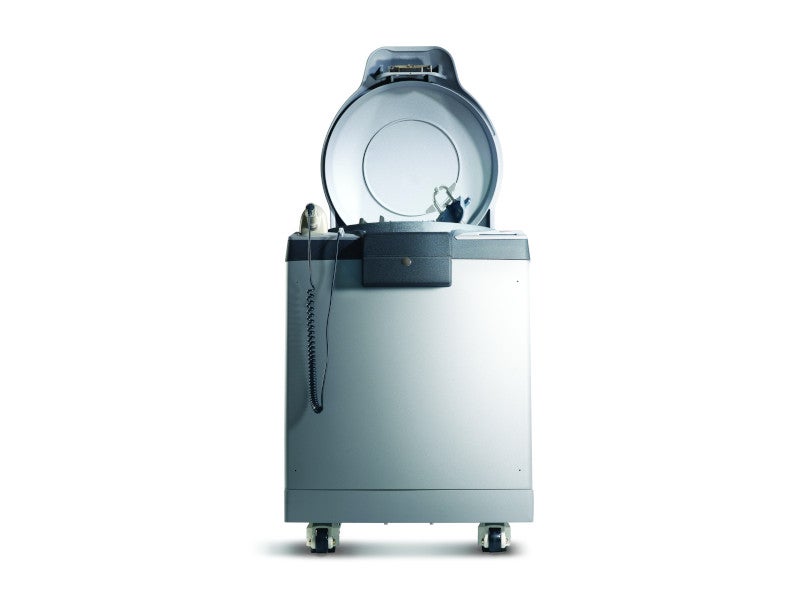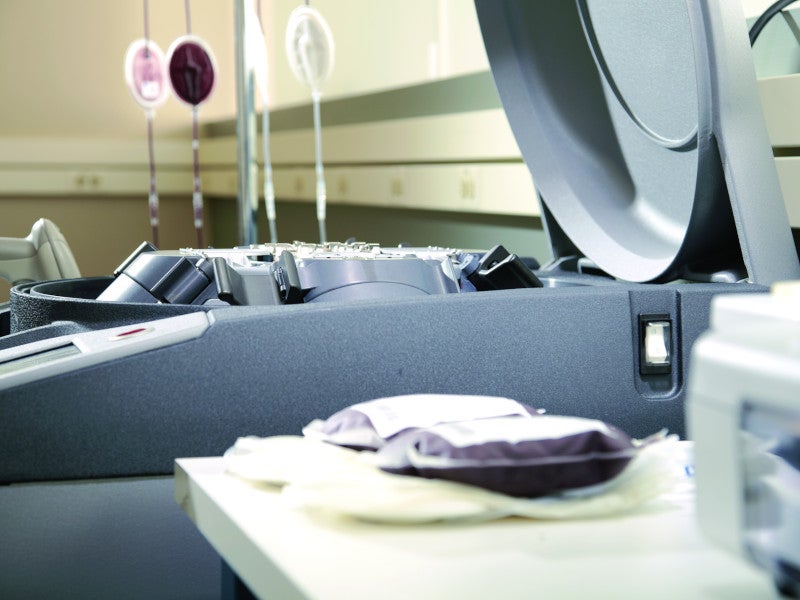Reveos® is a first-of-its-kind automated whole blood processing system developed by Terumo Blood and Cell Technologies (Terumo BCT), a US-based medical technology company, to automatically process whole blood into platelets and other components in a single centrifugation cycle.
Platelets are required for the treatment of patients with several conditions, including trauma and cancer.
The US Food and Drug Administration (FDA) cleared the device for commercial use in August 2023.
The FDA clearance presents a breakthrough solution, allowing blood centres in the US to increase the platelet collection capacity from existing whole blood donations, thereby supplementing the platelet supply, reducing labour and expenses, and enhancing overall operational efficiency.
Reveos system details
The Reveos is a self-contained automated system containing a primary device with in-built software to separate whole blood into its components and the Reveos® SELECT disposable set for the collection and storage of separated components.
The system is approximately 68.6cm wide and 100cm high and has a depth of 82.6cm.
The dedicated Reveos three-component blood bag set is used for collecting whole blood, component processing, and leukoreduction.
Additionally, the disposable Reveos platelet pooling set is dedicated to pool and leukoreduce interim platelet units (IPUs) to create a transfusable platelet dose.
Weighing 286kg, the device has a storage temperature between 0°C and 60°C (32°F to 140°F) while the operating temperature is between 18°C and 27°C (64.4°F to 80.6°F).
A completely integrated information management application, Reveos System Manager (RSM), manages the workflow for the device, improving process control, regulatory compliance and management report capabilities.
The Reveos device, together with the RSM and the integrated processing set, allows consistent separation of whole blood into quality components.
The innovative platelet yield index (PYI) feature in the system offers a prediction of the platelet yield of the processed unit.
Components of the Reveos automated whole blood processing system
The Reveos system is loaded with up to four units of whole blood. The system ensures proper labelling and identification of each unit for traceability.
The core function of the Reveos system is the advanced centrifugation process. The loaded whole blood is subjected to high-speed centrifugation, separating various blood components based on their density, including red blood cells (RBCs), platelets, leukoreduced plasma, and residual white blood cells (leucocytes).
As the components are separated, they are automatically expressed into their respective collection bags. Each bag is sealed by an integrated sealer at the end of the run, using radio frequency (RF) energy, to maintain the integrity and quality of the blood products. The data of the cycle is transferred to the RSM after the procedure and the products are unloaded for further processing and storage.
The RSM is compatible with the Cadence® data collection system, a service provided by Terumo BCT, which allows to offer enhanced customer service for enhanced reporting and traceability.
Cadence data collection system
The Cadence data collection system automatically records critical data in real-time throughout the process, including information about each blood unit, specific components collected and donor details, and securely transfers the collected data to Terumo BCT’s designated servers over the internet.
The collected data provides valuable insights into the performance and usage of the Reveos system.
By having access to relevant data in real-time, the RSM reports offer detailed information, which can be used for tracking products and evaluating individual operator performance.
Benefits of the Reveos system
The Reveos system will improve the blood and platelet supply for patients in the US. The system is flexible and can be customised according to the requirements of a centre. It can rapidly process four whole blood units using two procedures, two-component or three-component, within 18 minutes to 20 minutes.
The two-component procedure provides four RBC units, four plasma units and four residual leucocyte units while the three-component procedure provides four RBC units, four plasma units, four IPUs and four residual leucocyte units.
The system allows the achievement of higher yields and consistent product quality with fixed-bucket technology and integrated processing steps. It enables operators to obtain a higher volume of components from the same volume of whole blood.
The highly accurate system minimises manual intervention, reducing the risk of contamination and human errors during blood processing.




